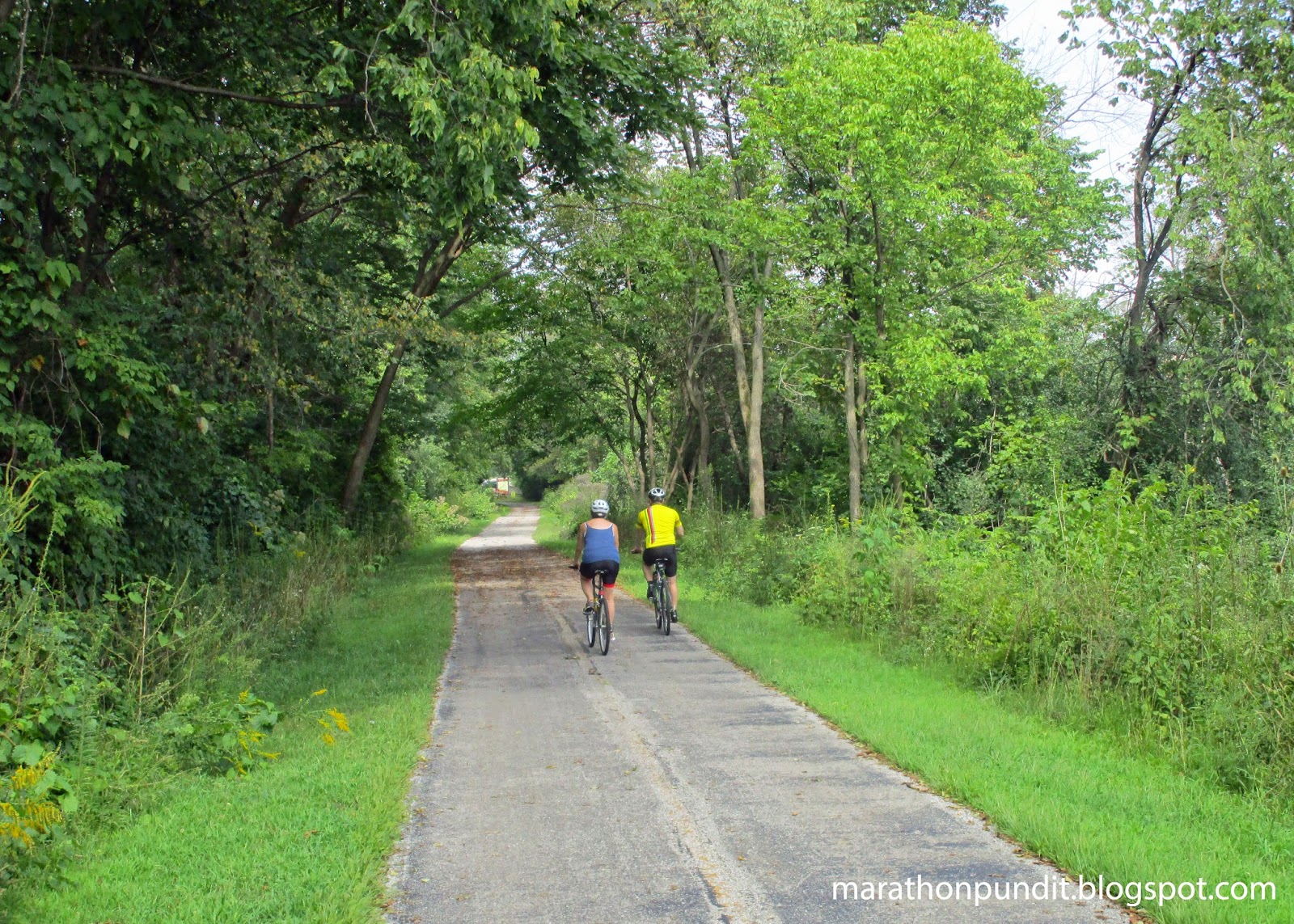The Reagan-esque beauty of the I&M Corridor is that no government authority controls all of it. The National Park Service plays only an advisory role in National Heritage Areas. This portion, as you can see on the sign, is overseen by the Forest Preserve District of Cook County. Oh, there I am on the right. Behind me is the parking lot at this portion of the trail in Willow Springs. It is difficult to find, but if you locate the Willow Springs Metra Station on Google Maps, you'll find the lot just north of of the railroad tracks.
Pictured above is the Illinois and Michigan Canal. Slowly nature is filling it in. When it opened in 1848 it was six feet deep and sixty feet wide at its surface. There were towpaths on both sides--barges were usually pulled by mules. This lyrics from the folk song Low Bridge, "I've got a mule and her name is Sal--15 miles on the Erie Canal" suddenly makes sense.
The Corridor is about 100 miles long and runs from Chicago's Bridgeport neighborhood to Peru in LaSalle County. Most of Corridor is crossed by a trail. This portion, which begins a few miles northeast of Willow Springs at LaGrange Road near Palos Park, is named for the legendary John Husar, a longtime outdoors columnist for the Chicago Tribune and a champion of preservation of the Des Plaines River valley, part of which includes the canal.
Cyclists are more numerous than hikers or runners on the asphalt trail.
To me, this picture looks like a previously missing still from The African Queen. Okay, I may be exaggerating , but the trail was smothered by oppressive tropical-like humidity on this afternoon.
As for the canal, commercially it was a mixed success. Railroads siphoned business from the I&M just a few years after it opened, but it paid off its debt on time and it reached its peaked tonnage in 1882. But by 1914 commercial traffic had almost completely vanished. In 1933 the canal was closed to even recreational use. The Civilian Conservation Corps worked on I&M restoration, including some locks, but that project ended when our nation entered World War II. The canal was largely left to decay until 1984.
Varieties of goldenrod populate the sides of the trail.
The tall tree is a black walnut. As for the man who signed the National Heritage Corridor legislation into law, Ronald Reaganlearned to swim in the Hennepin Feeder Canal near Tampico, Illinois.
I found a patch of yellow jewelweed too. The orange variety is much more common in Illinois.
Reagan first became aware of his love of nature when his family moved from Chicago to the much smaller western Illinois town of Galesburg in 1916.
Canal recreation doesn't exclude fishing. This man was trying his luck near the trail parking lot. Above him is Willow Springs Road.
Poke berries are ripening along the Corridor. The leaves of the American Pokeweed are edible if properly prepared, otherwise they are poisonous. The berries were once commonly used for dye.
Our journey is almost done--Little Marathon Pundit walking back to our car.
Related posts:
- Ronald Reagan Trail: Hennepin Feeder Canal
- Illinois' Hennepin Canal in January
- The Illinois & Michigan Canal
- Marathon Pundit's Ronald Reagan Trail
- Report from Tampico, Illinois on Reagan's 100th birthday











No comments:
Post a Comment